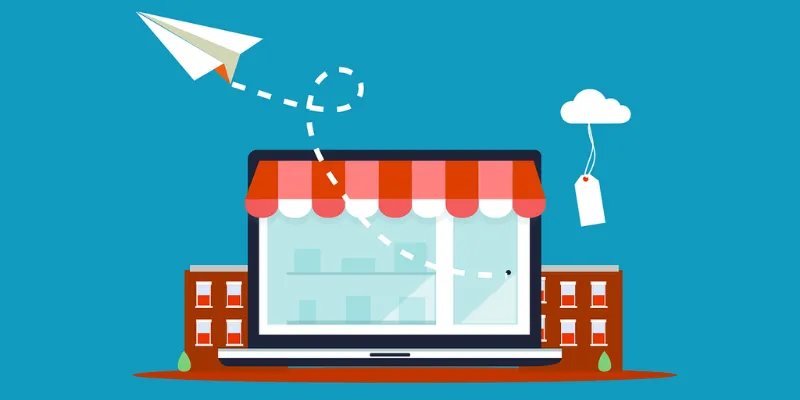Can online-only brands thrive in a market like India?
With a burgeoning middle class with increased disposable incomes, India has grown significantly. But is it ready for online-only brands?
India is a very big country – 1.3 billion people, 29 states, seven union territories and a $2.7 trillion economy. This presents a scrumptious opportunity for growth with a developing market and largely open economic policies. With a burgeoning middle class, increased disposable incomes and discerning spend, consumption patterns in India have grown significantly.
In this dynamic, the Fast-Moving Consumer Goods (FMCG) ecosystem has evolved as more consumers are becoming brand conscious, health-conscious, and overall more nuanced in terms of consumption patterns. The opportunity, size of the market, and macro dynamics seem like a no-brainer and yet, building a brand in India is a herculean task.

Multiple complications
With a big market comes multiple complications. First, given the size of this country, distribution is a major challenge. The number of stores and the size of the population can be both a boon and bane. From the outside, the opportunity seems so large but from the inside, one will see that even building a regional or local brand is a task.
This is why even brands that have existed for years have not been able to scale past a particular state or region. Those that have really scaled though are multi-billion-dollar companies that have built huge value – but these are just a handful.
The sheer complication of the distribution ecosystem and the need for multiple layers of distribution – multiple super stockists and stockists – is the first challenge. Coupled with the need for a large force of on-ground sales executives FMCG penetration and sales is a costly task.
Beyond cost
However, the cost is not the only challenge here. Think about coordinating with 25 sales executives across Mumbai on a daily basis. Then, make it 200+ when you want to scale to 10 cities, and 1,500+ when you want to be in 100 (as the number of cities scales, the number of executives required per city reduces – given the size of the city). Experience and precisely executed logistics, as well as a different team for coordination, makes it clear that FMCG distribution is not for the faint-hearted.
Branding challenges
That’s not all! Building brand recall is a whole other ball game. Distribution is just the first aspect but it does not ensure sales. One can place a product in 100,000+ stores but ensuring that it is picked up by consumers is another task in itself.
As the market is very large, marketing to millions of consumers also becomes extremely expensive. Consider a brand that sells a mass or even mass premium product – the addressable market in India for both is not millions but hundreds of millions of consumers.
In the late 80s and early 90s when brands were being built, advertising was still relatively cheap. Today, as the number of brands has increased, advertising and marketing are exorbitant. To generate offtake, one needs consumers to go to stores and demand products.
Yet, to do that, brands need to build recall, which requires marketing expenses that a small P&L may not be able to take. Thus, brands tend to get stuck in a vicious cycle where either one spends too much too early or one spends a little every month (which cumulatively becomes a large amount) but does not translate into serious sales.
This is a trap all of us in this industry constantly grapple with and are looking for innovative solutions to solve.
The Online Solution
In the last five years or so, the e-commerce revolution has come to India. While some thought it was a bubble or fad, it is pretty clear that it is here to stay.
Horizontal platforms burned millions of dollars and while many complained, buying patterns in India (for a certain section of the population at least) have evolved. These platforms need a large amount of capital to build consumer stickiness and multiple repeat transactions but this online opportunity has created an exciting opportunity for consumer products brands for three major reasons:
- Brands with smaller P&Ls can reach consumers nationwide without deep offline distribution
- Brands need not invest in high-cost above the line marketing but can focus on lower fixed cost and ROI-focussed digital marketing
- Brands need not only play in large categories, and niche brands can be built in relatively smaller yet scalable market opportunities.
This new market dynamic has allowed for a whole new slew of brands being created via the digital ecosystem – brands that we like to call D2C. In the early days, sceptics were not sure whether brands could be built without the offline presence and whether online could be a channel of sale and not just visibility.
But with the advent and hyper growth of horizontals, online shopping has become a part of a certain section of Indian consumers’ lives. Thankfully, with the horizontals, the ancillary ecosystem to e-commerce – logistics, warehousing, CRM, packaging materials – has also developed to some level of maturity.
This means that brands can actually set up with a smaller investment, team, and infrastructure to at least test the opportunity as compared to a full-fledged offline setup. This was not the case 10 years ago.
The million-dollar questions
While this seems very easy and exciting, there are two big questions:
- Can brands be built online only?
- Can brands reach serious scale using just online?
There is no correct answer to any of these questions and I am no magician to pull one out of the hat except to say that this all depends on the context.
For example, health products. Health and wellness is a market that has historically been built offline but logically, there is a case for online brands because doctors are not as easily available. Also, consumers may be willing to wait three to four days to receive their products (considering they are long-term supplements).
Given the small size of the product, logistics cost also makes sense because one can pack a high value in a low volume (e.g. Rs 500-600 in below 500g of voluminous weight).
On the other hand, let’s talk about a commodity like detergent. You may not want to wait three to four days to get the detergent but more importantly, this is a high-volume product at a low value and thus, the logistics cost to ship it will just not make economic sense.
Thus, when considering whether brands can be built online only, one needs to understand the consumer mentality when buying the product as well as the viability and costs of e-commerce as a channel to sell it.
In answering the second question, sceptics have said that online brands are small and real scale can be achieved only offline. While we have seen D2C unicorns built in the US, India still has some time to go. But D2C brands are not ‘small’.
Whether it is headphones, personal care, herbal products or tea, several brands are clocking revenues over $15 million per annum, or have reported valuations of more than $100 million. Thus, while the market is still nascent, the opportunity has already seen models of success and it is at an inflexion point for more.
Conclusion
While D2C has fewer sceptics now, large consumer brands still have a very small share of their overall revenue coming from e-commerce. Online focussed brands may have sprung up and scaled but there needs to be a case for why e-commerce should be used as an enabler or channel.
Without this, a genuine scale cannot be achieved. While this debate will continue to exist, online-only brands can be built but it depends on the category and business case.
Regardless of the outcome of this debate, which will play out over the next five years, consumers are benefiting. Today’s consumers in far-flung areas like Imphal, Muzaffarnagar, and Trichy can access more brands and products than 10 years ago. This, to me, is the biggest win of all.
(Edited by Saheli Sen Gupta)
(Disclaimer: The views and opinions expressed in this article are those of the author and do not necessarily reflect the views of YourStory.)







